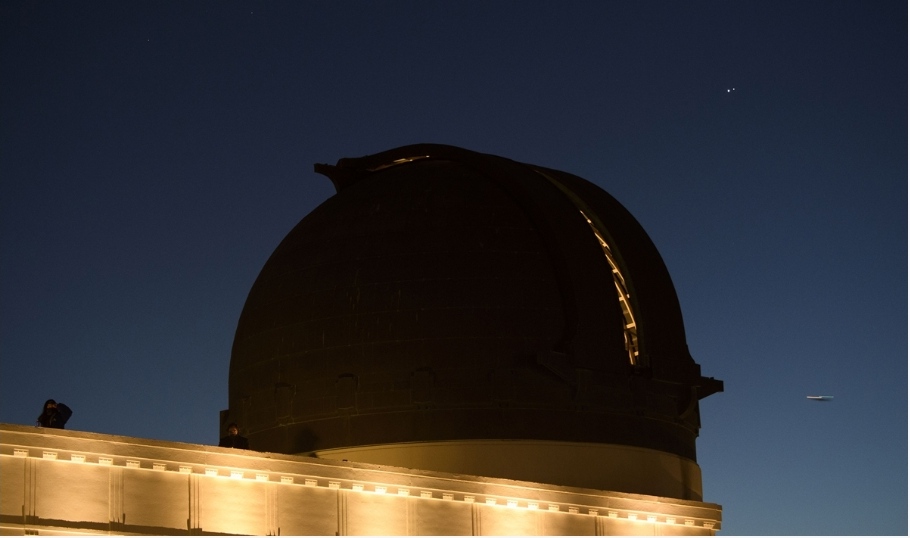Jupiter and Saturn Within Planetary Embracing Distance : Rare Celestial Event

Dated : 23 Dec 2020 (IST)
Jupiter and Saturn, the two biggest planets of our Solar System came within planetary embracing range in Monday’s evening sky. This phenomena will not occur next again until 2080.
This “great conjunction,” as referred by astronomers, occurred fortuitously on the winter solstice for those in the Northern Hemisphere and the beginning of summer in the South.
People look from the roof of the Griffith Observatory as planets Jupiter and Saturn, upper right, are seen beyond a telescope dome during the great conjunction, on the same day as the winter solstice on Monday in Los Angeles, California, the US. The great conjunction refers to the astronomical alignment of Jupiter and Saturn, the closest for nearly 400 years.
Though in fact the actual distance between the two planets were, more than 730 million kilometers. Thougj due to their alignment in relation to Earth, they appeared to be closer to each other than at any time in almost 400 years. The Optimal “conjunction” took place at 1822 GMT.
The best viewing conditions on Monday were in clear skies and close to the Equator, while people in Western Europe and along a vast swathe of Africa had to strain and look to the southwest.
Even in India, hundreds of space fans gathered in Kolkata and other places too, to watch – through a telescope at a technology museum in the city, or from surrounding rooftops and open areas. In Kuwait, astrophotographers traveled into the desert west of Kuwait City to capture the once-in-a-lifetime event.
Looking with a telescope or even a good pair of binoculars, the two gas giants were separated by no more than a fifth of the diameter of a full moon. But to the naked eye, they would merge into a “highly luminous” double planet, said Florent Deleflie from the Paris Observatory.
“The Grand Conjunction refers to the period when two planets have relatively similar positions in relation to Earth,” said Deleflie.
“With a small instrument – even a small pair of binoculars – people can see Jupiter’s equatorial bands and its main satellites and Saturn’s rings.” The last time Jupiter and Saturn nuzzled up this close was in 1623 but in many places it could not be seen due to bad weather. Visibility was apparently much better the time before that during the Middle Ages, on March 4, 1226 to be precise.
Jupiter, which is the largest planet, takes 12 years to revolve around the sun.While it takes Saturn 29 years.
Every 20 years or so, they appear to observers on Earth to come closer to each other but this close only every 400 years.




